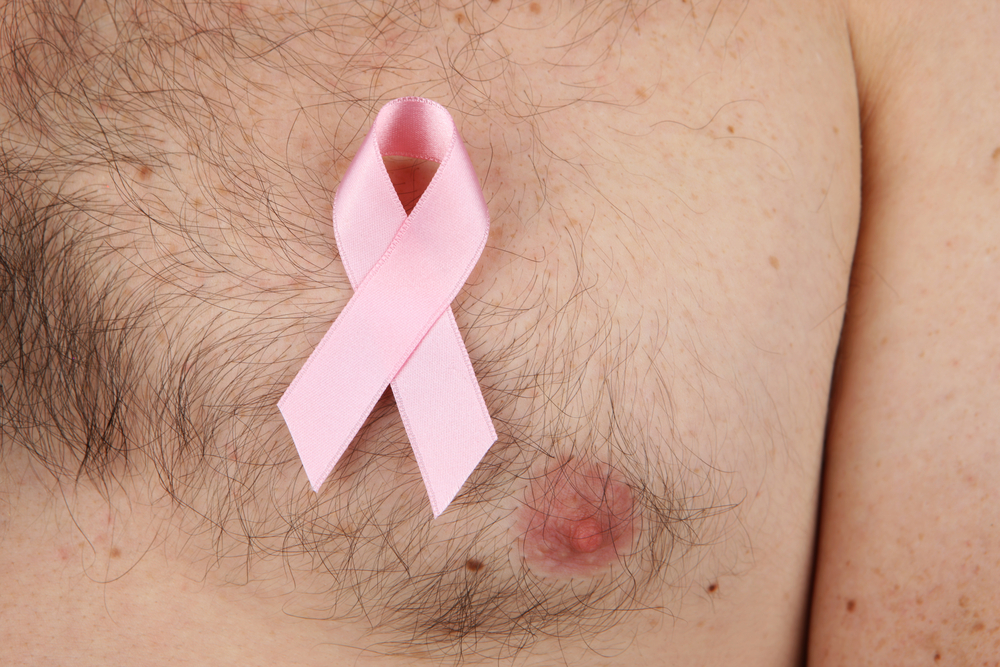
Image: Check your humps for lumps, too, gentlemen! | Shutterstock
Breast cancer makes most people think pink; but gents, don’t make the mistake of thinking you can’t develop breast cancer. Men have less breast tissue than women, but they do still have it, which means that they aren’t immune to breast cancer. Men need to check themselves regularly for any new lumps or bumps, just like women.
A cancer by any other name…is still cancer
Although the breast cancer movement receives more airtime than any other form of cancer, it leaves male patients out of the conversation, and that’s a problem.
Men only account for about 1% of all breast cancer cases. That might sound like a very small number…but every year about 2,600 men are diagnosed with breast cancer—and those are only the ones that actually go see the doctor. Most men don’t even realize they’re at risk.
“Men don’t think of themselves as having breasts,” says Dr. Sharon Giordano of the MD Anderson Cancer Center. “They don’t realize that all men have some residual breast tissue.” So by the time they make it to the doctor, their cases are often much more advanced than women’s.
Unfortunately, this means a slightly lower survival rate than women—only 74% after 5 years, as opposed to 83% after 5 years for women.
Reasons to brave the pink
The stereotypical breast cancer clinic is often decorated in lots of pink, and treatments are designed with women in mind. But even if you’re not a fan of the color, you owe it to your family—and yourself—to get checked out.
By “family,” I also mean future children, who could be affected as well. Men suffering from breast cancer are also likely to have the defective genes BRCA1 and BRCA2, which can pass to their children, raising their chances of getting cancer.
If a man with breast cancer has a son, that son has about a 6% chance of developing cancer if his father has the BRCA2 gene and about a 1% chance if he has BRCA1. The female child of a man with breast cancer has it even worse: she has a 40-50% chance of developing cancer with either of these genes.
If you’re not getting tested for your family, do it for yourself: men with a genetic predisposition to breast cancer are at a higher risk of getting prostate cancer, too.
It could happen to you
In men, breast cancer is usually detected as a hard lump beneath a nipple and areola. But because men don’t think of themselves as having breasts, treatment is often delayed.
Risk factors to keep in mind are family history of breast cancer, especially if the BRCA1 and BRCA2 genes are present in relatives. High levels of estrogen can also be a contributing factor, as can radiation exposure.
If you know breast cancer is present in your family history, make it a point to check yourself out every month and to see a doctor if you ever detect anything unusual.
We might think breast cancer is a “women’s problem,” but really, it can affect us all, including the children we might want to have in the future. So there’s absolutely no reason not to be tested and learn everything you can about keeping your breasts healthy—no matter your gender!
